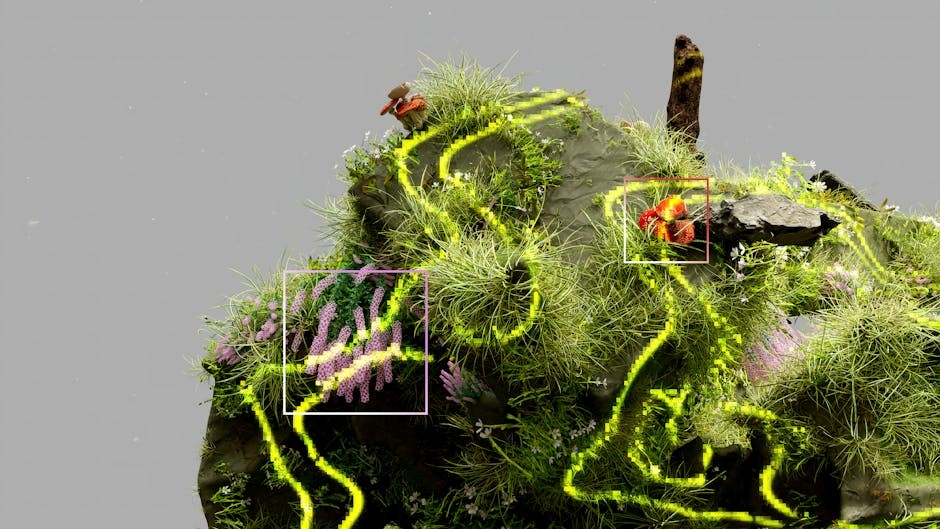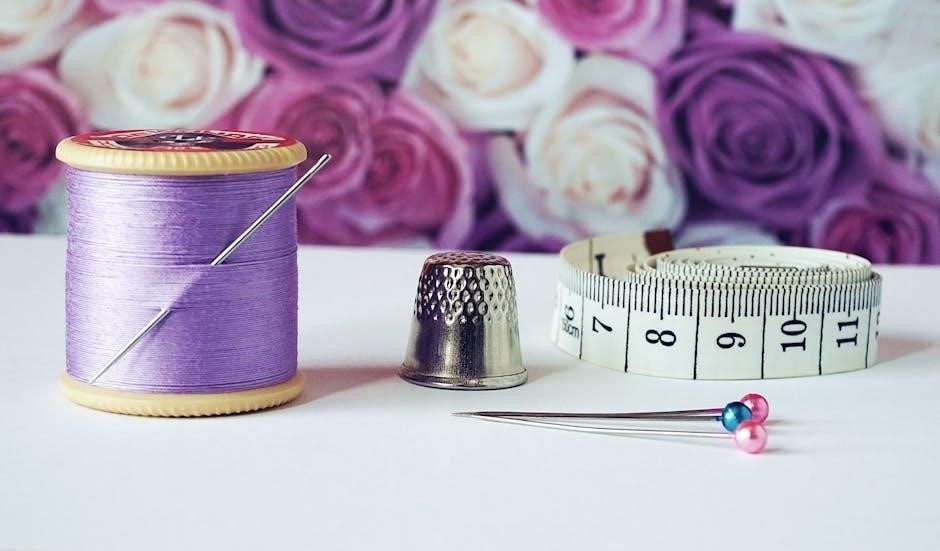Thread identification is fundamental in engineering and manufacturing to ensure compatibility and functionality. It involves recognizing thread types, pitches, and diameters for proper connections. Common in hydraulic and pneumatic systems, accurate identification prevents leaks and failures. Using tools like pitch gauges and calipers, professionals match threads for seamless integration. This guide provides a comprehensive overview of thread identification processes and best practices.
1.1 Importance of Thread Identification
Accurate thread identification is critical to ensure proper connections and prevent system failures. Incorrect thread matching can lead to leaks, safety hazards, and equipment damage. It guarantees compatibility across components, especially in high-pressure applications like hydraulics and pneumatics. Proper identification also minimizes downtime and reduces maintenance costs. Understanding thread types and measurements is essential for maintaining system integrity and performance. This process ensures reliability and safety in industrial, automotive, and aerospace applications.
1.2 Common Thread Types Overview
Common thread types include NPT, BSP, Metric, JIC, ORFS, and flanges, each designed for specific applications. NPT threads are tapered for sealing in pipes, while BSP threads are parallel, commonly used in hydraulic systems. Metric threads are standardized globally, offering precise measurements. JIC and ORFS threads are popular in high-pressure hydraulic applications, ensuring leak-free connections. Understanding these types is crucial for compatibility and functionality across industries, ensuring safety and efficiency in system design and operation.

Common Thread Types
Common thread types include NPT, BSP, Metric, JIC, ORFS, and flanges, each designed for specific applications. Understanding these enhances compatibility and functionality in various systems.
2.1 NPT (National Pipe Thread)
NPT stands for National Pipe Thread, a widely used tapered thread standard in North America. It is commonly found in piping systems for sealing applications. NPT threads create a leak-proof connection when properly mated, relying on the taper to compress the threads and form a seal. This thread type is often used in hydraulic and pneumatic systems, ensuring reliability and durability in various industrial settings.
2.2 BSP (British Standard Pipe)
BSP stands for British Standard Pipe, a thread standard widely used in the UK and other countries. It is a parallel thread type, unlike tapered threads like NPT. BSP connections often include a seal ring for leakage prevention. Common in hydraulic and pneumatic systems, BSP threads ensure reliable connections in various industrial applications. Their popularity stems from their simplicity and effectiveness in maintaining secure seals under pressure.
2.3 Metric Threads
Metric threads are a widely used standard in international industries, known for their precise measurements. They are typically straight or parallel and defined by their nominal diameter and pitch in millimeters. Commonly used in hydraulic and pneumatic systems, metric threads ensure compatibility across global markets. Their popularity stems from standardized specifications, making them reliable for precise engineering applications and easy identification using calipers or pitch gauges.
2.4 JIC (Joint Industrial Council)
JIC (Joint Industrial Council) threads are widely used in hydraulic systems, offering a reliable connection with their 37-degree flare. They are available in male and female configurations, ensuring versatility. Known for their durability, JIC threads are ideal for high-pressure applications. Identification involves measuring the thread diameter and pitch using calipers and pitch gauges, making them a common choice in industries requiring secure and consistent connections.
2.5 ORFS (O-Ring Face Seal)
ORFS (O-Ring Face Seal) threads are designed for high-pressure applications, featuring a flat face with an O-ring for a leak-free seal. They are commonly used in hydraulic systems, offering superior sealing capabilities. Identification involves measuring the nominal diameter and thread pitch, ensuring compatibility. ORFS threads are favored for their reliability and resistance to leakage, making them a preferred choice in demanding industrial environments.
2.6 Flanges and Their Threads
Flanges are integral components in piping systems, featuring threads that ensure secure connections. Common types include DIN and ANSI standards, each with specific thread patterns. Flanges often incorporate sealing mechanisms like O-rings or gaskets for leak prevention. Accurate thread identification is crucial for compatibility, especially in high-pressure applications. Flanges with threaded connections are widely used in hydraulic and industrial systems, requiring precise measurement to ensure proper fitting and functionality.

Step-by-Step Thread Identification Process
Identify thread type, measure diameter, determine pitch, and confirm port size using tools like pitch gauges and calipers. Match findings with reference tables for accuracy.
3.1 Determine Male or Female Thread
First, determine if the thread is male or female by examining its location. Male threads have ridges on the outside, while female threads are recessed. This step is crucial for selecting compatible connectors. Use visual inspection and tools like thread ID kits to confirm. Always ensure the thread’s orientation matches the mating component for proper assembly and functionality.
3.2 Measure Thread Diameter
Measuring the thread diameter is essential for accurate identification. For male threads, use calipers to measure the outside diameter at the crest. For female threads, measure the inside diameter at the root. Ensure calipers are properly calibrated for precise readings. This step helps determine the nominal size and type of thread, ensuring compatibility in hydraulic, pneumatic, and other systems where proper connections are critical.
3.3 Determine Thread Pitch

Thread pitch is the distance between adjacent threads, measured in threads per inch (TPI) or millimeters. Use a thread pitch gauge to determine the pitch by aligning the gauge with the threads; For TPI, count the number of threads within a 1-inch span. For metric threads, measure the distance between two threads in millimeters. Accurate pitch determination is critical for identifying thread type and ensuring compatibility in hydraulic and pneumatic connections.
3.4 Identify Port Size
Port size is determined by measuring the thread diameter and referencing it against standard charts. For male threads, measure the outer diameter using calipers. For female threads, measure the inner diameter. Compare the measurement with reference tables to identify the nominal port size. Accurate port size identification ensures correct component selection and proper system functionality, especially in hydraulic and pneumatic applications where compatibility is crucial for performance and safety.

Tools for Thread Identification
Essential tools include thread pitch gauges, calipers, and identification kits. These tools help measure diameter, pitch, and type, ensuring accurate thread identification and compatibility.
4.1 Thread Pitch Gauge
A thread pitch gauge is a essential tool for identifying thread pitch by measuring the distance between threads. It works by aligning the gauge with the thread until it fits snugly, indicating the correct pitch. Available for both inch and metric threads, it helps determine Threads Per Inch (TPI) or millimeter pitch. Accurate pitch measurement is critical for ensuring compatibility and proper sealing in hydraulic and pneumatic systems.
4.2 Calipers
Calipers are a key tool for measuring thread diameter and pitch accurately. For male threads, measure the outside diameter, while for female threads, measure the inside diameter. Digital or Vernier calipers provide precise readings, essential for identifying metric or inch-based threads. Accurate measurements ensure correct thread identification, preventing mismatches in hydraulic or pneumatic systems. Regular calibration of calipers is crucial for maintaining measurement reliability and consistency in thread identification processes.
4.3 Thread Identification Kits
Thread identification kits are essential tools for professionals, offering a comprehensive set of gauges and references. These kits typically include both male and female thread specimens in various sizes, covering metric and imperial standards. They often come with detailed charts to match thread measurements, ensuring accurate identification. Portable and convenient, thread identification kits streamline the process of determining thread types in hydraulic, pneumatic, and mechanical systems, enhancing efficiency and reliability.

Specialized Threads
Specialized threads are designed for unique applications, offering enhanced performance through tailored designs. They cater to specific industries requiring precise specifications and advanced functionalities.
5.1 Tapered vs. Straight (Parallel) Threads
Tapered threads, like NPT, create a seal through compression, ideal for high-pressure applications. Straight or parallel threads, such as BSP or Metric, rely on additional sealing elements. Tapered threads gradually decrease in diameter, ensuring a tight connection as they engage, while parallel threads maintain a consistent diameter, requiring O-rings or gaskets for sealing. This distinction is crucial for selecting the right thread type for specific industrial needs.
5.2 Sealing Mechanisms in Threads
Sealing mechanisms in threads ensure leak-free connections, critical for performance and safety. Tapered threads, such as NPT, rely on thread deformation for sealing, creating a tight fit. Straight threads often use O-rings or gaskets, like ORFS, where the seal is achieved through compression. Proper identification of these mechanisms is essential for selecting the correct thread type and ensuring optimal functionality in hydraulic, pneumatic, and industrial applications. This ensures reliability under various operating pressures and conditions.

Diameter and Pitch Measurement
Accurate measurement of thread diameter and pitch is crucial for compatibility. Use calipers for major and minor diameters, while pitch gauges determine threads per inch or metric equivalents.
6.1 Major Diameter and Nominal Diameter
The major diameter refers to the largest diameter of a thread, measured at the crest for external threads or the root for internal threads. The nominal diameter is the basic size used for identification and standardization. Accurate measurement of these diameters is essential for proper thread identification and ensures compatibility between male and female connectors. Using calipers, measure the outside diameter for male threads and the inside diameter for female threads to determine these values accurately.
6.2 Threads Per Inch (TPI) and Metric Equivalents
Threads Per Inch (TPI) measures the number of threads within a one-inch length, while metric threads use pitch, the distance between thread crests in millimeters. Common TPI ranges from 2 to 28, with metric equivalents spanning 1.0 to 3.0 mm. Accurate TPI and pitch identification ensure compatibility and proper sealing in hydraulic and pneumatic systems. Using a thread pitch gauge helps determine these values, crucial for selecting the correct connectors and maintaining system integrity.

Visual Aids for Thread Identification
Charts, diagrams, and reference tables are essential for identifying thread types, pitches, and diameters. These tools help distinguish between NPT, BSP, and metric threads, ensuring compatibility and accuracy.
7.1 Charts and Diagrams
Charts and diagrams are vital for quick thread identification. They visually differentiate thread types, pitches, and diameters, helping users identify NPT, BSP, or metric threads. Detailed illustrations of thread profiles, such as tapered or straight patterns, aid in distinguishing subtle differences. Color-coded or annotated diagrams further enhance clarity, making it easier to match threads with compatible components. These tools are indispensable for ensuring accurate and efficient thread identification across various applications.
7.2 Reference Tables
Reference tables are essential tools in thread identification, providing detailed specifications for various thread types. They include measurements such as threads per inch, pitch, and diameter, covering standards like BSP, NPT, and metric threads. These tables allow for precise comparison and selection, ensuring compatibility and accuracy. By cross-referencing thread characteristics, users can avoid errors and ensure proper connections in hydraulic, pneumatic, and other systems.

Applications in Various Industries
Thread identification is critical in hydraulic, pneumatic, automotive, and aerospace industries. Accurate thread matching ensures system compatibility, preventing leaks and failures. Proper connections are vital for safety.
8.1 Hydraulic Systems
In hydraulic systems, precise thread identification ensures leak-free connections and optimal performance. Common threads like BSP, JIC, and ORFS are used to maintain fluid pressure and flow. Proper alignment prevents system failures, making thread compatibility crucial for hydraulic components. Using the right connectors enhances reliability and safety in high-pressure environments. Accurate identification is essential to avoid costly downtime and maintain efficiency.
8.2 Pneumatic Systems
In pneumatic systems, thread identification is critical for maintaining air pressure and flow. Common threads include BSP and metric types, ensuring secure connections. Proper thread matching prevents leaks and ensures efficient operation. Misidentification can lead to system inefficiency or failure. Using compatible connectors enhances performance and safety in pneumatic applications. Accurate thread identification is vital for reliable operation in compressed air systems and equipment.
8.3 Automotive and Aerospace
Thread identification is crucial in automotive and aerospace industries for ensuring safety and performance. Common threads include metric, JIC, and NPT types, used in fuel systems, hydraulics, and connectors. High precision is required to prevent leaks and ensure proper sealing. Advanced materials and specialized connectors are often used to withstand extreme conditions. Accurate thread identification is essential for maintaining reliability and performance in vehicles and aircraft, where system failure can have severe consequences.

Best Practices for Accurate Identification
Use calipers to measure diameter and pitch accurately. Employ thread pitch gauges for precise thread count. Refer to reference charts for cross-verification, ensuring correct thread type identification.
9.1 Using Calipers for Precision
Calipers are essential for precise thread measurement. Measure the outside diameter for male threads and the inside diameter for female threads; Accurate readings ensure proper thread identification and prevent connection issues. Regular calibration of calipers is crucial for reliable results. This step is vital in maintaining the integrity of hydraulic and pneumatic systems, ensuring leak-free and secure connections.
9.2 Avoiding Common Mistakes
Avoiding common mistakes is crucial for accurate thread identification. Misidentification often occurs due to incorrect tool usage or assumptions based on thread appearance. Always use calibrated tools like calipers and pitch gauges. Measure both male and female threads accurately, and avoid relying on visual inspection alone. Cross-referencing measurements with reference tables ensures precision. Proper training and adherence to best practices minimize errors and ensure reliable results.



